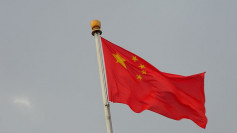After nearly a decade of laborious construction efforts, the bridge connecting Hong Kong and Macau to Mainland China will finally open later this week. The sea-crossing bridge is said to be the longest of its type in the world and had amassed a massive $20 billion infrastructure budget to be completed.
The bridge will connect Macau and Hong Kong to the Chinese city of Zhuhai, located in Mainland China. Chinese President Xi Jinping is expected to attend the inauguration ceremony which is set on Tuesday, along with top officials from China, Macau, and Hong Kong. While the bridge will be inaugurated on Tuesday, the public will have to wait until Wednesday to fully utilize the new bridge.
The bridge is 55-kilometer long or about 34 miles. It was originally planned to be finished in 2016. However, due to various setbacks and delays, the deadline was pushed several times in order to cope up with increasingly difficult construction options.
The bridge is expected to play a crucial role in China's ambition of establishing what it calls as the Greater Bay Area, a region which is expected to cover 56,500 square kilometers across southern China, Hong Kong, and Macau. The Greater Bay Area, due to its massive size, will cover 11 cities and will affect up to 68 million people.
The proponents of the project claim that the new bridge will cut travel times between the cities by as much as three hours. They added that it will also allow commuters and tourists to be able to move around easily within the region.
Although China flaunts that the bridge will significantly cut travel time, private car owners from Hong Kong will only be allowed to cross the bridge as long as they have acquired the necessary permit. Because of this, private car owners will have to park at the Hong Kong port and then switch to use either a shuttle bus or specially hired cars once they have gone through immigration.
The bridge is also an engineering marvel. It was designed and built to withstand super typhoons, earthquakes up to 8-magnitude, and even strikes from super-sized cargo vessels. In order to accommodate this massive infrastructure feat, the builders and developers used 400,000 tons of steel, which is 4.5 times more than what was used in building the Golden Gate Bridge in San Francisco.
Another impressive feature of the bridge is that it includes a 6.7-kilometer submerged tunnel. This will allow sea vessels to have a clear path across the Pearl River Delta.






